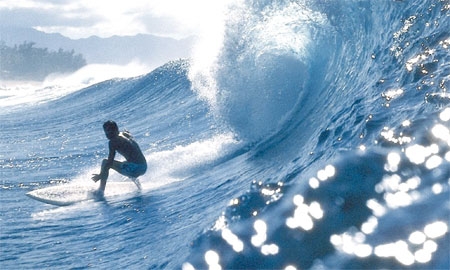Costa Rica is a little country that packs a large punch when it comes to prime destinations, a fact that the two million visitors it receives each year have copped on to. Much of its success is due to prudent planning decades ago that recognized conservation as the only sustainable route in developing the country’s tourism industry. There was too much natural endowment at stake: more than half a million different species of the planet’s land animals inhabit the country’s 19,700 square miles.
As a result of these policies, today Costa Rica boasts 27 national parks, 58 wildlife refuges, 32 protected zones, 15 wetland areas, 11 forest reserves and eight biological reserves, as well as 12 other conservation regions.
MORE THAN A QUARTER OF COSTA RICA IS PROTECTED LAND AND IT BOASTS 27 NATIONAL PARKS, 58 WILDLIFE REFUGES, 32 PROTECTED ZONES, 15 WETLAND AREAS, 11 FOREST RESERVES, 8 BIOLOGICAL RESERVES AND 12 OTHER SPECIAL ZONES
|
This setting has, of course, neatly lent itself to the development of eco-tourism, and more particularly, eco-adventure. Within the parameters of sustainable tourism and some of the planet’s most majestic natural displays, Costa Rica plays host to the world’s adrenalin junkies, who gain further satisfaction from the unique and quality experience the conservationist country can afford them.
With its thick, verdant jungle, white crusted beaches, volcanic mountains, and hot spring pools, Costa Rica is Central America’s undisputed adventure Mecca. From zip lining above the green canopy of the rainforest to hiking the red-rimmed Arenal Volcano amidst the cries of jungle monkeys and the excellent year-round surfing at hand, there are more than enough options in the country to satisfy most tastes and to provide a varied, action-packed holiday.
From the capital San Jose, located in the central valley region of the country, the nesting grounds of the green sea turtle in the western Caribbean are just a day’s excursion away. During summer months, thousands of turtles come ashore to lay their eggs, and nearby Tortuguero National Park is often referred to as Costa Rica’s Amazon. Giving way to a navigable network of lakes and channels, Tortuguero can only be explored by water.
The nearby La Selva reserve further reinforces the area’s claim of biodiversity, with more than 2,000 species of plants. Further wildlife viewing opportunities are to be had on the Sarapiqui River, where visitors can descend the rapids by raft or kayak.
Pacific coast excursions from San Jose to the Nicoya Peninsula, a surf haven ringed by beautiful beaches, are also available and include catamaran trips to Tortuga Island, along with guided boat trips along the Tarcoles River to see its crocodiles and water and migratory birds.
Arenal Volcano, a 1,633-meter-high active volcano where regular eruptions provide some of the most awe-inspiring sights in the country, and the Monteverde region north of San Jose both offer opportunities for trekking, ATV tours, and canopy tours of cloud forests and riverine woodlands.
A trip to the Arenal hanging bridges consists of traversing 15 bridges between five and 100 meters long that cross the rainforest along a two-mile interpretive trail.
The Tabacon Grand Spa Thermal Resort at the base of Arenal Volcano, generally considered to be one of the best spas in the world, offers access to the region’s renowned hot springs. It is an excellent example of a responsible tourism business, as are the secluded and masterfully designed Hotel Punta Islita, and the Los Sueños Resort and Marina, which caters specially to avid fishermen.
River tubing in the Rincon de la Vieja National Park is another option north of the capital, as well as zip wiring through the rainforest at Monteverde, where 320 types of birds can be seen.
South of San Jose on the central Pacific coast lies Dominical. In addition to exploring the region’s caves by sea kayak and snorkeling and scuba diving at the Caño Island Biological Reserve, this area also boasts spectacular marine life, with five species of dolphins and three species of whales living all year round in the waters off its coasts.
In Punta Uvita, near the Ballena Marine National Park, enthusiasts can try their hand at flying an ultra-light plane over the parklands and the southern Pacific coastline.
This region also features the largest concentration of mangrove swamps in Central America along the Sierpe River, and is home to Corcovado National Park, where six natural eco-systems have been identified amongst the park’s 54,500 hectares of humid rainforest.
Helping cut down on travel times, Costa Rica’s local airline, Nature Air, is the world’s first carbon neutral airline, flying passengers to the most exciting destinations in the country.

0 COMMENTS